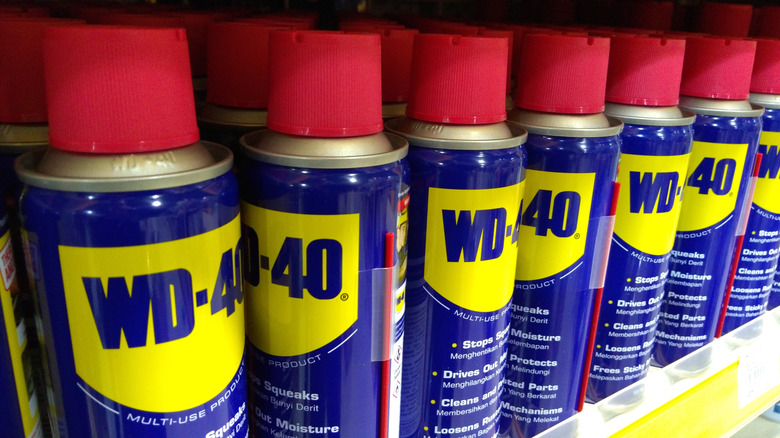Can You Use WD-40 To Cover Scratches In Your Car's Paint?
WD-40 has many applications in and around your car. Its water displacement formula helps start wet engines, while preventing foamy oxidation on the battery terminals as well. In contrast, its cleaning, lubricating, and anti-soil properties could help remove stuck spark plugs, clean off bugs or dead insects from bumpers and grilles, rejuvenate tired-looking and foggy headlights, and remove or prevent rust on exposed metal surfaces.
Many don't know that WD-40 can remove mild scratches and swirls from paint, but it depends on the type of scratch.
The makers of WD-40 claim its product is useless against deep scratches where the metal underneath has been exposed or damaged. You can check this by gently running your fingernail on the scratch, or via close visual scrutiny. If the gash is deep enough to catch the tip of your nail, no amount of WD-40 or machine polishing will make it magically disappear. It's the same issue if the scratch is metal-deep.
How to remove light scratches or paint residue using WD-40
While it's best to leave those deep scratches to the professionals, you can grab a can of WD-40 to remove light paint damage like scuff marks, surface marring, or paint residue from hitting other cars, garbage cans, parking bollards, or lamp posts. The procedure requires a bit of elbow grease (especially for larger scuff marks), but it requires nothing more than a can of WD-40, and a dry microfiber towel.
First, make sure the area is clean and free of dust and loose dirt that could add more scratches to the paint. Next, grab a can of WD-40 and liberally spray over the scuff marks and paint residue. Let it sit briefly before lightly buffing the area with a microfiber towel. Repeat the process until all the scuff marks are gone. You can spray the WD-40 directly on the microfiber towel to tackle more significant scratches. Turn the towel over and lightly buff the area to remove the excess WD-40, and you're good to go.
Deeper scratches and swirls require polishing and waxing to restore the finish. On the other hand, you could look into ceramic coatings as an added layer of protection against scratches, swirls, oxidation, and other sticky residues like tree sap, while preserving the value of your ride.
